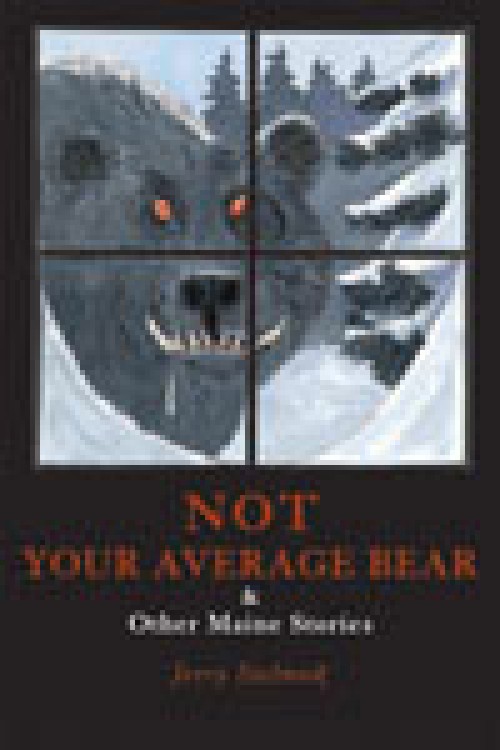by By Jerry Stelmok
Tilbury House Publishers, 2007
If James MacGillivray, creator of the Paul Bunyan tales, were to collaborate on a book with Stephen King and the Brothers Grimm, the result might be something like this collection of stories by Jerry Stelmok. Indeed, in Stelmok’s fictional world, where deer become men and where the cab of a plow truck provides the setting for an encounter with the devil on a stormy night, such a collaboration would be entirely possible. Each of the stories – five set in Maine and one on the shore of Lake Superior – begins with a firm grounding in realistic details of character and place, but none stays in familiar territory for long.
In “Maxfield Ridge,” the most enchanting story in the collection, we meet Matt Nichols, a decent, sensible fellow who works for the telephone company. When he’s sent out on a rainy November afternoon to repair some equipment near an abandoned farm, he takes his deer rifle along, and, as he’s finishing the job, he spots a handsome buck. A skilled hunter, Nichols finds the buck unusually elusive. Stelmok describes the hunt in some detail, lingering on features of the landscape and on Nichols’ thoughts as he tries to account for the deer’s movements. Finally, the hunter gets off a clean shot. And the story takes a most unexpected turn. Trying to discover the truth about what has occurred, Nichols is drawn into the history of the old farm. When a mysterious crone tells him of the strange goings-on of its most recent inhabitants, he can’t quite believe her story, but he can’t dismiss it, either. The truth proves to be as elusive as the deer itself.
The title story is what used to be called a rippin’ good yarn. “Not Your Average Bear” starts quietly, with Stelmok’s signature evocation of place: “A wet wind, raw for so early in September, swept across the lake and lashed a small knot of men engaged in a discussion of obvious gravity. . . . Inland, just beyond the beach, was an impressive stand of white pine and red spruce that marched in an uninterrupted phalanx over a series of drumlins before continuing up the gentle flanks of the mountain, where they disappeared behind curtains of low scudding clouds.” From there, the story escalates to a horrific tale of greed and revenge that ultimately pits the cocky woodsman Jean Batiste against a bear of uncanny size, ferocity, and intelligence. While it is hard to sympathize with the men, a reader isn’t exactly rooting for the bear that terrorizes them, either.
These are all, in various ways, stories of deterioration, of things going from bad to worse. While some of the characters, like Jean Batiste, deserve the trouble that finds them, others, like Mary Brighton of “Maggie” or Larry Schneider of “The North Shore,” clearly do not. A lonely farm woman, Mary is guilty of nothing worse than marrying the wrong man. And steady, gum-chewing Larry has changed his ways since the youthful sin for which he’s being so ominously called to account. In Stelmok’s stories, the natural world might be a beautiful place, but human life is precarious and strange.
For all its bleakness, the collection ends with a good laugh, when Willie, the inept main character of “The Three Requests,” hits upon an unusual way to get out of a tight spot. While trying hard to honor his mother’s death-bed requests, Willie finds himself rushing to the hospital with a screaming young woman in the back seat of his car. She’s in the throes of labor, and he’s lost in a tangle of back roads. Getting his car stuck on the ice while attempting to turn around, Willie does something unthinkable but eminently practical. It’s macabre, but it is funny.


